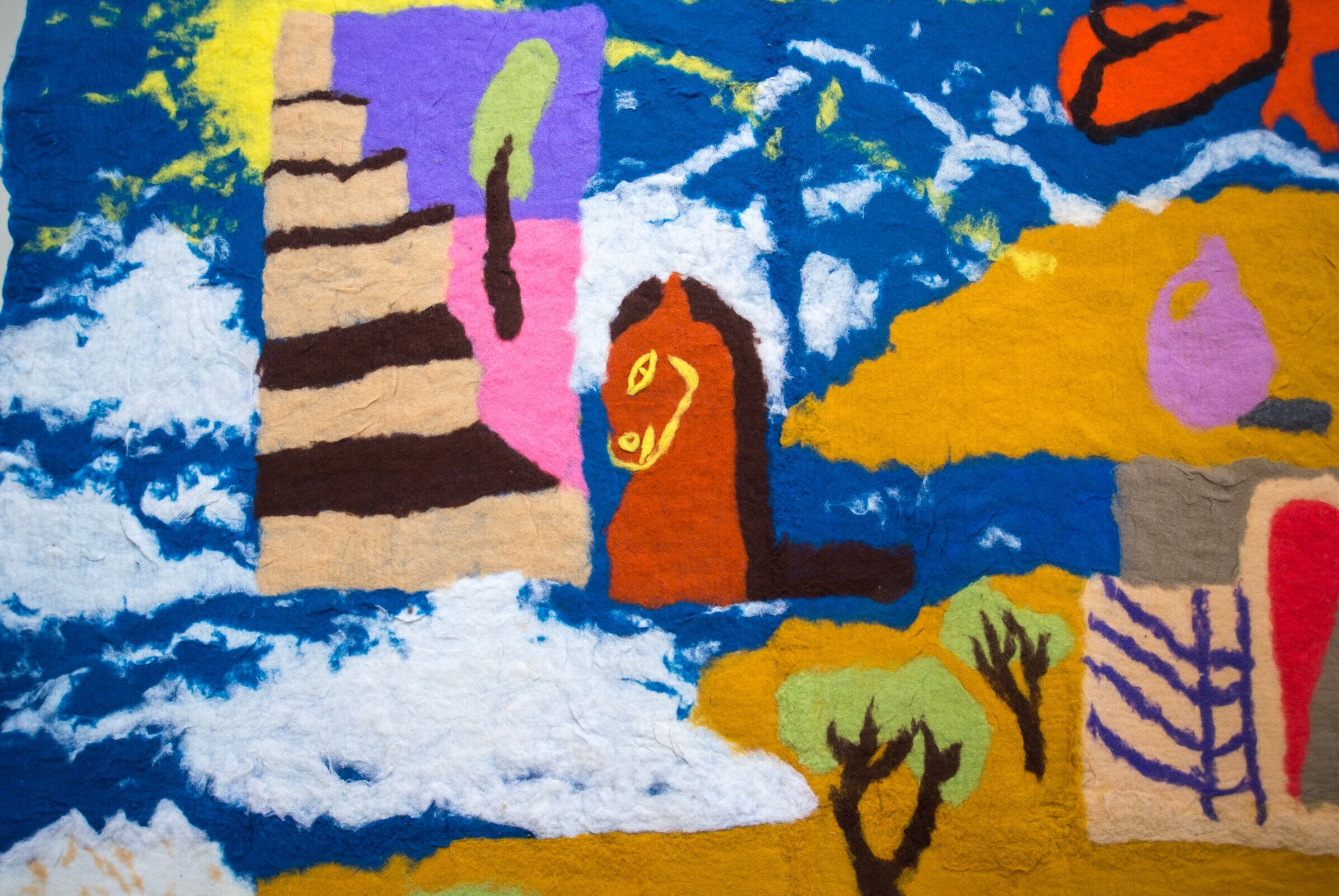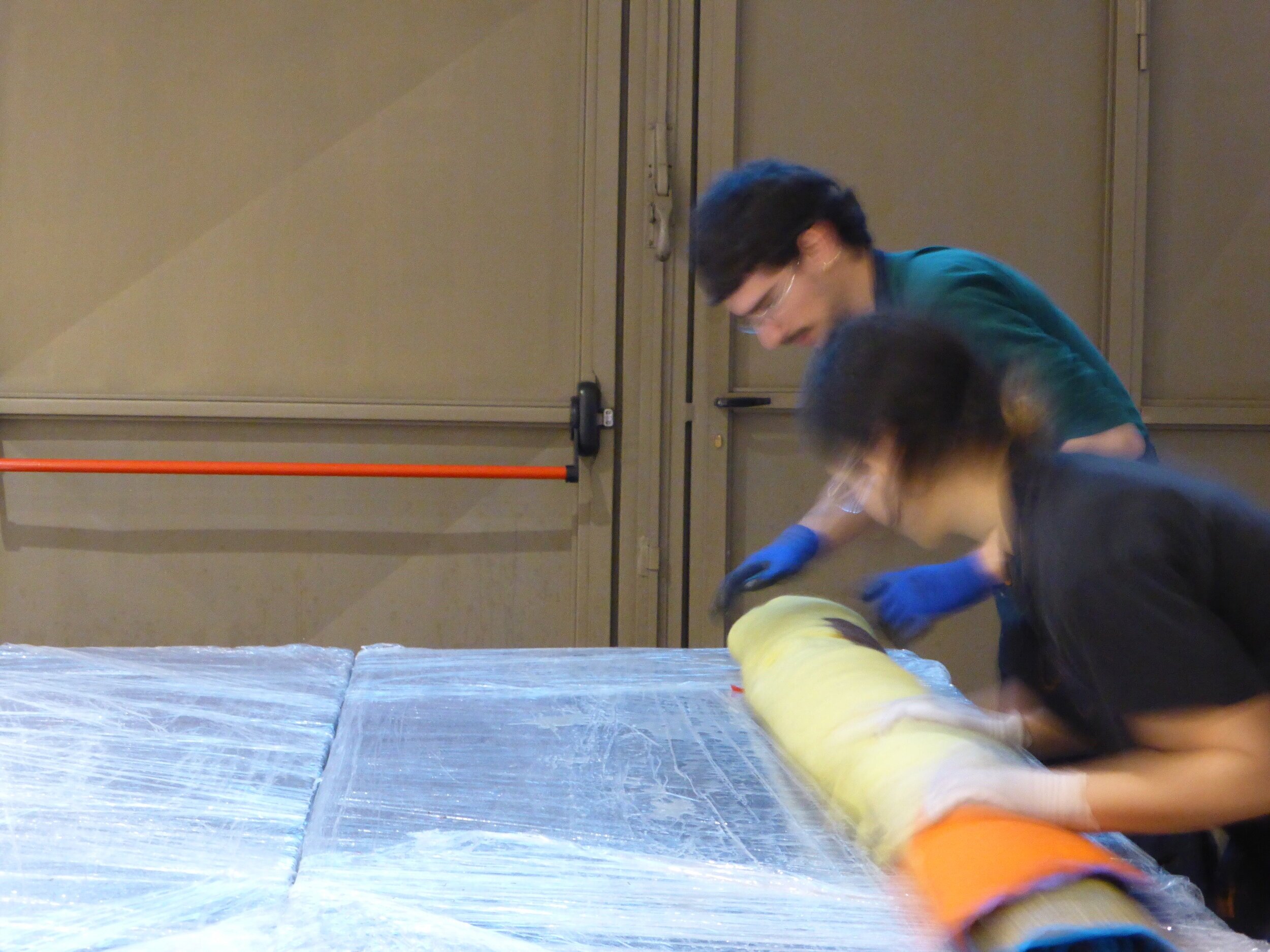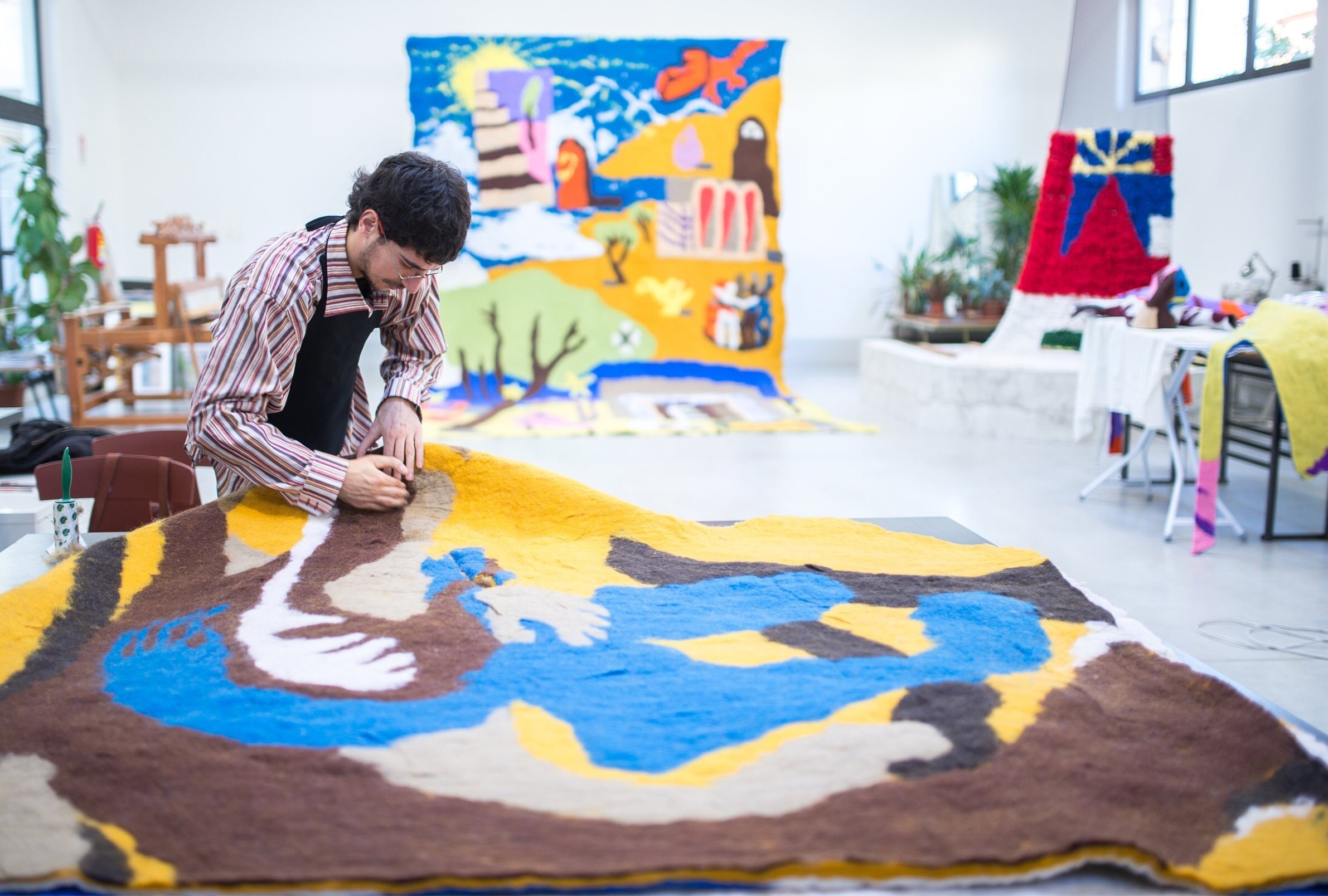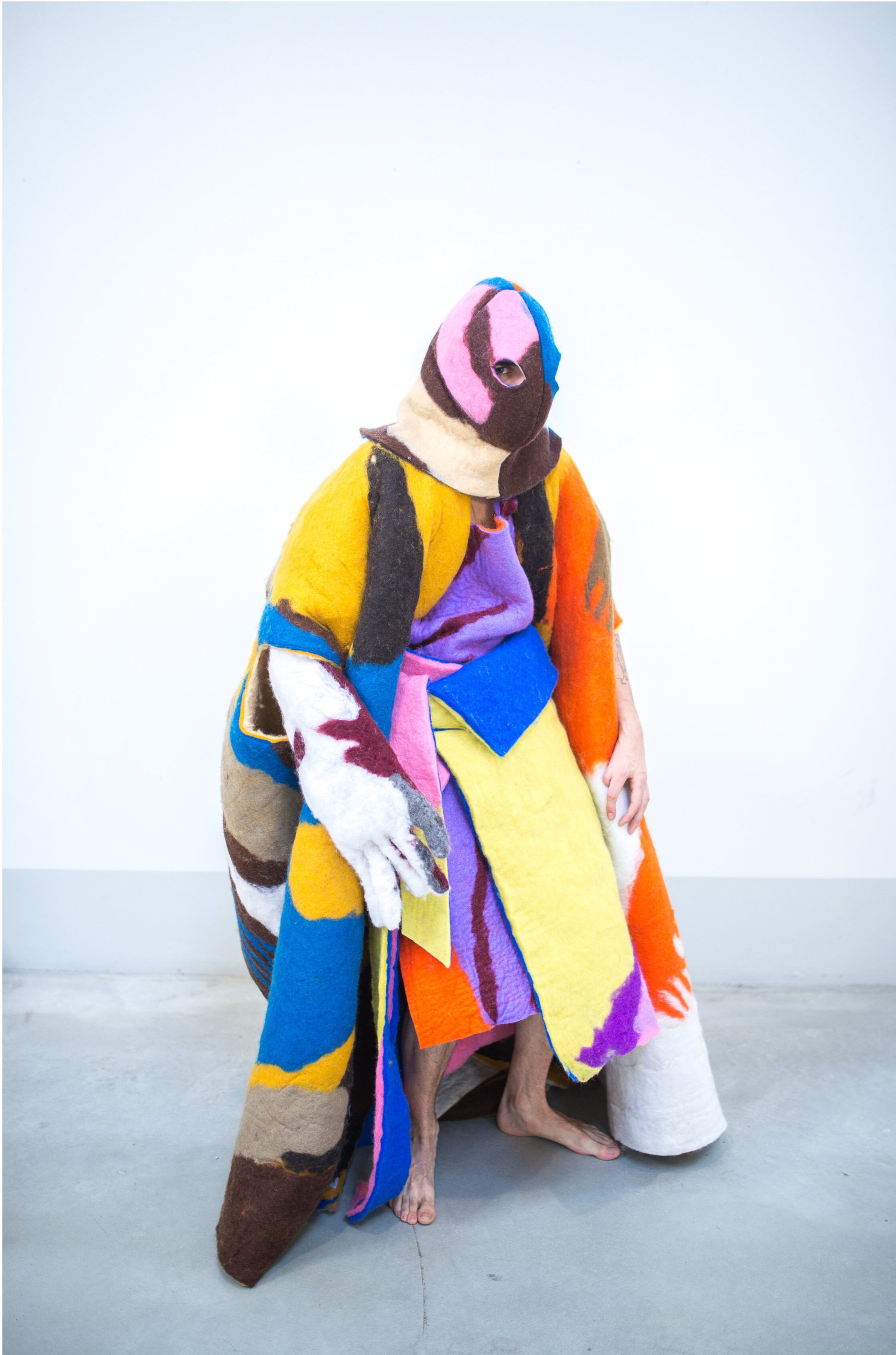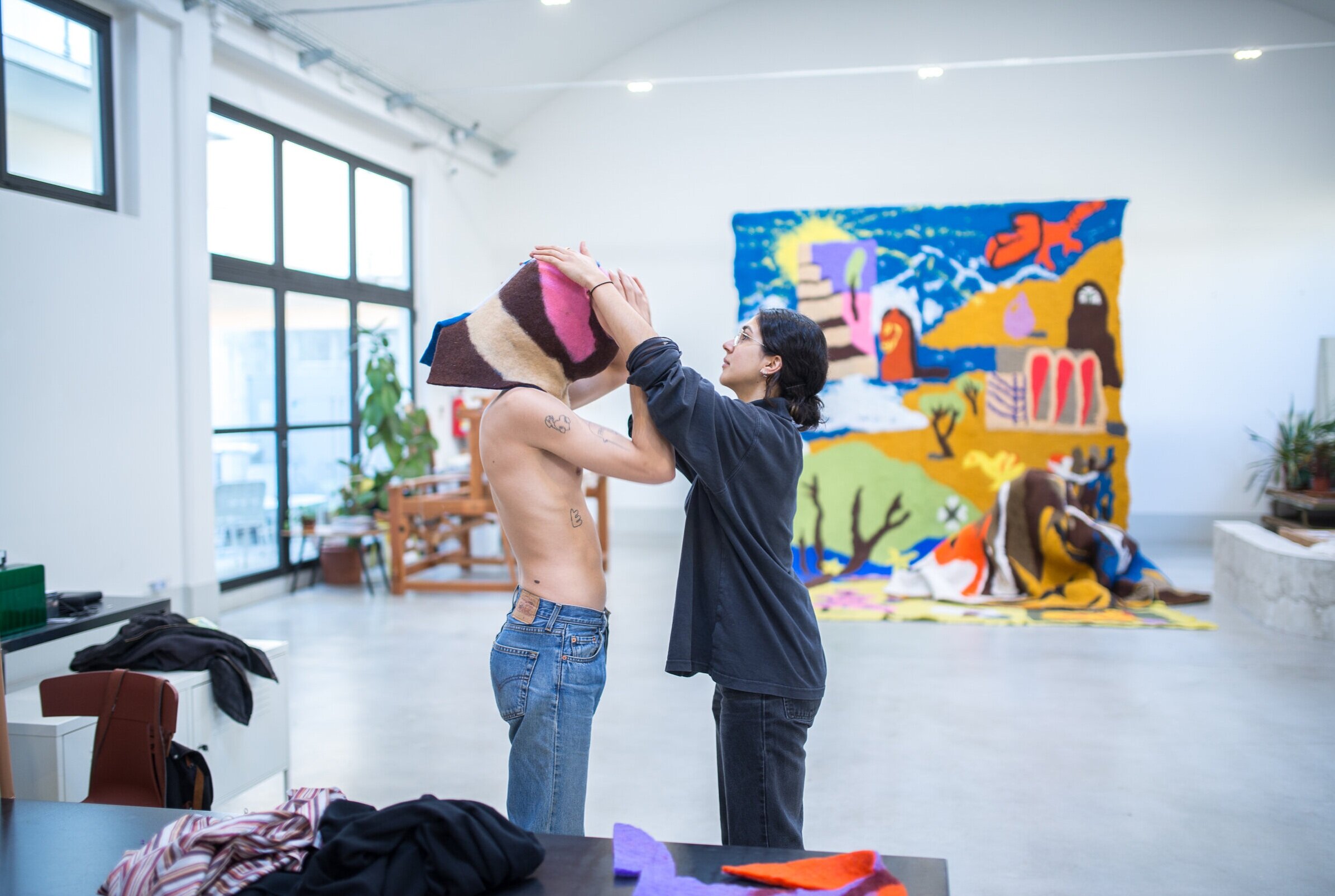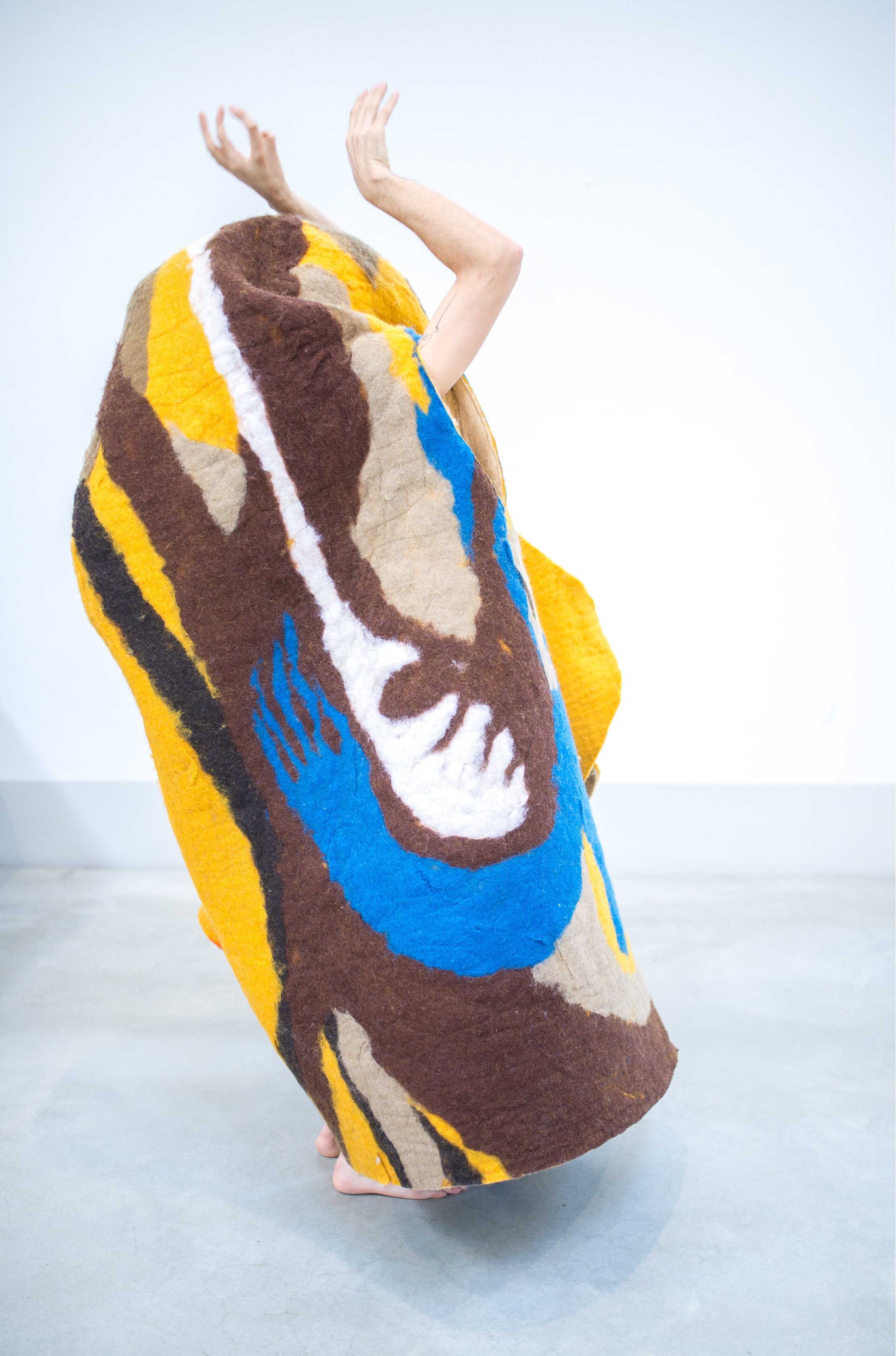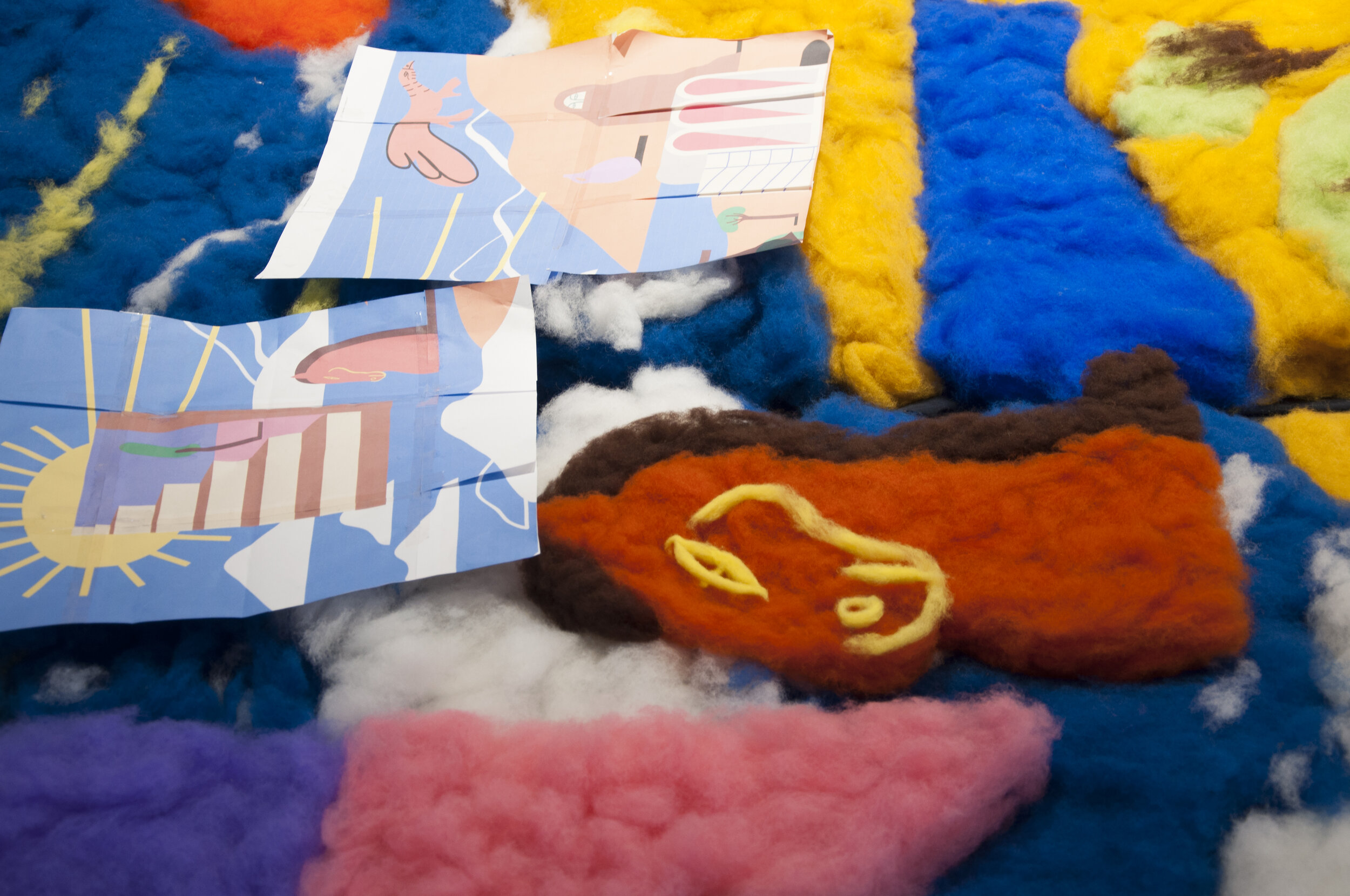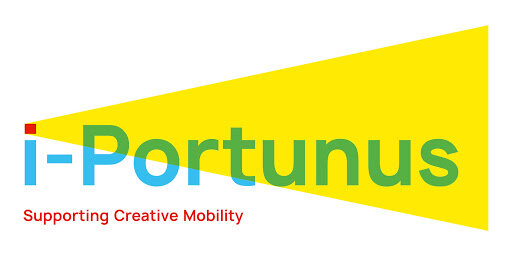Photo: Rachele Salvioli
THE ARTISTS
Darius-Robin Dolatyari-Dolatdoust (Chambery en Savoie, 1994) is a French artist, performer and designer.
After studying fashion design at École Duperré, graphic design at École Estienne in Paris and art at the University of Lille, he is currently studying dance, performance and choreography at ISAC - Institut Supérieur des Arts et Choregraphies at the Royal Academy of Fine Arts in Brussels. Since 2019 he has been running an independent art space called La Cave, based in Brussels.
Célia Boulesteix (Limoges, 1996) is a French artist and designer who lives and works in Paris.
She gained a BA in fashion, art and multidisciplinary design at École Duperré in Paris. For several years she has been studying and experimenting with felt techniques.
The Residency
Conceived by Darius-Robin Dolatyari-Dolatdoust in collaboration with Célia Boulesteix, Moving Landscape is a project that crosses diverse disciplines, such as sculpture, textile-painting, installation, choreography and performance. Inspired by Greek Mythology, it aims at creating a sculptural and moving landscape, where bodies, costumes and movement blur together in a landscape made out of felt.
The first part of the project was carried out during a residency at Lottozero, from 16 to 30 December 2019, and consists in the creation of a huge felt fresco of 6 by 4 meters and a series of costumes, also made out entirely of felt, which will be used to create a performance, that will be the final outcome of the project.
The big felt frames a landscape, a physical and temporal space where dancers can perform and move. Its graphic imagery is inspired by the rest of the antiquities found in the city of Athens. Reproducing this imagery as a pattern on the felt is a way to re-connect with a common past and cultural heritage.
Photo: Rachele Salvioli
Photo: Rachele Salvioli
felting process
Felt is one of the first textile which has been created by humanity, by working the fibres directly, without warp or weft.
Its technique consists in rubbing and compacting wool fibres, previously wetted with hot water and soap, in order to create one dense, non-flammable, water-proof and almost tear-proof material. The felting process intervenes on the surface flakes of the fibre: they slide over each other, hooking up permanently and creating the felt under the force of heat, humidity, soap, pressure, rubbing, and compression.
Felting wool is already a dance, by implicating the body in the process of the making.
the costume is the first dance
In the performance that will be developed in the second phase of the project, costumes will have a fundamental role in creating new body's shapes, sculptural and moving at the same time.
The costume has the ability to occupy the body by dissolving it, re-organizing the body space which thus defines a new framework to experiment.
Like a text for an actor, the costume becomes a partition, offering to the performer a new possibility to move.
Photo: Rachele Salvioli
Photos: Rachele Salvioli








